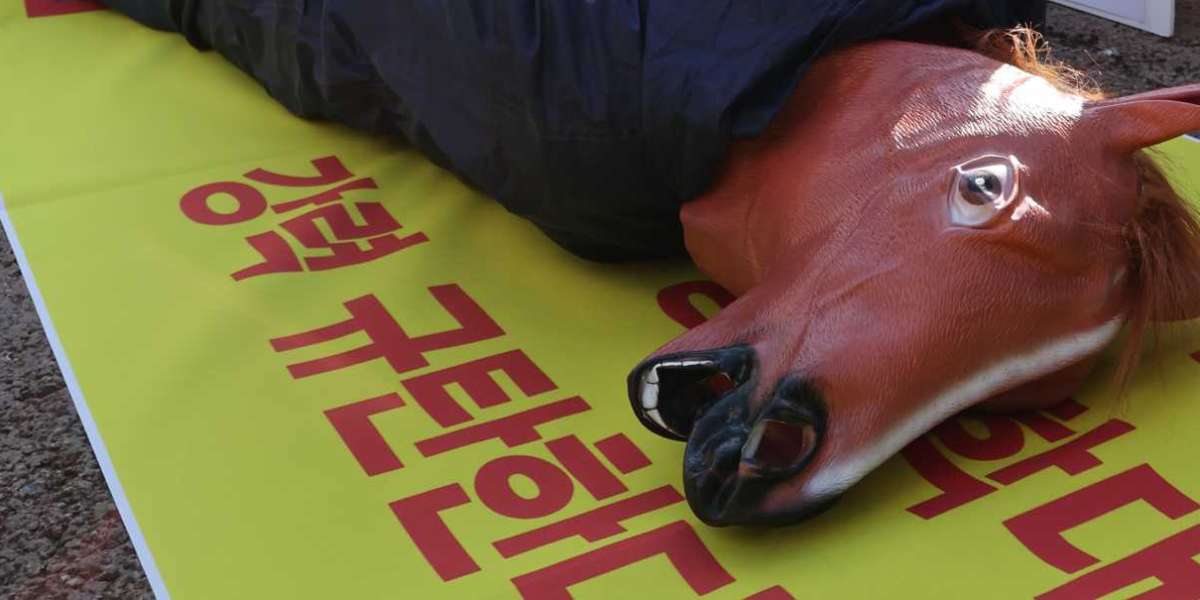A horse died during the filming of the historical drama "The King of Tears, Lee Bang-won," and the state-run broadcaster KBS stated last week that it is introducing criteria for animals in productions in response to a long-running conflict and resulting public outcry over the horse's death.
Following the release of "Lee Bang-won," it was found that the production team for the film forcedly stumbled over a horse while filming, injuring a stuntman and killing the horse less than a week after the incident occurred. The fact that there were no guidelines in place to safeguard animal safety in the country's film and media industries was subsequently disclosed.
Despite the fact that it is late, this is the first time the industry has taken such a step. A production crew should employ computer-generated visuals as much as feasible in sequences that might be harmful to an animal's bodily or psychological wellbeing, according to the Korean Broadcasting Society's standards. It also prohibits the purposeful hurting or death of animals, as well as the consumption of live animals. It directs producers to appoint animal protection supervisors and to recruit veterinarians along the course of the production process.
A national set of rules on the aforementioned topic is now being developed by the Ministry of Agriculture, Food and Rural Affairs. This set of principles will be applied to the existing production guidelines of each broadcaster and production studio, and each will be held accountable for doing so. The rules will state that animals should not be treated as mere props and will contain suggestions for measures such as CG alternatives, safety equipment, and adequate rest and food for the animals involved in the production. It will also be advised that animal specialists be present at all times during the filming process.
In addition, the ministry intends to update the existing Animal Protection Act in order to address the issue of animal filming in particular.
There are legal restrictions.
Korea now has an Animal Protection Act, which prohibits cruelty to animals in any form. Cruelty is defined as the intentional infliction of unnecessarily and avoidably painful bodily and psychological discomfort on an animal, as well as neglect that causes the animal to suffer from starvation and sickness. It should be noted that there is no article or clause that mandates what should take place during the shooting of animals, which means that the interpretation of what is classified as "unnecessary and avoidable bodily pain" is up to the filmmakers.
As stated in the legislation, companion animals, which are commonly referred to as pets, shall be supplied with particular measures for their well-being, including exercise and resting areas. However, the legal meaning of this group of animals includes only dogs, cats, rabbits, ferrets, guinea pigs, and hamsters, and not any other animals. In practice, this means that former racehorses such as Kami, who was part of the production of "Lee Bang-won," are in a legal bind when it comes to filming in South Korea.
Of course, animal protection legislation prohibits broad acts of cruelty against mammals, birds, reptiles, amphibians, and fish, with the exception of those raised for food. However, there is no explicit guidance on how these animals should be handled in particular situations.
On Wednesday, representatives from the Democratic Party of Korea's Representative Wi Seong-gon participated in a public debate on racehorse care organized by the Korean Animal Welfare Association and Jeju Vegan. In their presentation, they brought up the example of the racehorse Seung-ri, who was among the greatest in the game with 19 career victories but was abandoned and died in a barn after retiring at the age of 10.
"Providing for the welfare of racehorses has its budgetary, administrative, and regulatory limitations. According to Kim Jin-gab, manager of the Korea Racing Authorities' Veterinarian Center, "we require the backing of the government as well as enactment (of relevant laws) and the collaboration of associated institutions."
In a statement, Park Chang-gil, the executive director of the non-governmental group Voice 4 Animals, said that while there are several provisions protecting companion animals, there is not a single clause safeguarding racehorses.
What is the situation in Hollywood?
To be sure, enacting legislation to protect animals' rights in the movie industry is not precisely the norm by international standards. As far as the United States is concerned, neither federal nor state law specifically addresses how animals should be handled during filming, according to the Michigan State University College of Law's "Overviews of Laws Concerning Animals in Film Media," which was released in 2011.
As of right now, the American Humane Association's rules for animal actors are the only regulations that provide direct protection for animal actors.
The American Ethical Association (AHA), which was founded in 1877, is a non-profit organization that supervises the humane treatment of animals on the sets of Hollywood films and other broadcast projects. The certification logo, which states "No Animals Were Harmed," is well-known to audiences in the United States and across the world. This symbol occurs before or during the credits of films or television shows in which animals are prominently featured.
Despite the fact that it is not a government agency, the American Humane Association's film and television branch has been authorized by the Screen Actors Guild to monitor animal usage in media projects, allowing it to award its internationally recognized credentials.
The AHA does have limits, such as a lack of enforcement and staffing, which has been mentioned as a reason for its limited control of "The Lord of the Rings" trilogy in New Zealand, according to the New Zealand Herald.
The most important thing is to raise public awareness.
Despite the fact that there is no government agency responsible for supervising animal filming and the inherent limits of the AHA, most Hollywood films appear to be eager to adhere to criteria regarding the use of animals in their productions.
Despite the fact that the AHA gave "The Lord of the Rings: The Two Towers" a "questionable" rating for animal welfare, the organization praised the production crew for their cooperation in answering questions and giving documentation during the investigation.
Despite the fact that the AHA does not endorse the video, it makes it obvious that the production crew did, at the very least, take some steps to ensure animal welfare. Several scenes, including one in which a gang of horsemen appears to be racing down a steep slope and another in which the figure Gollum appears to be eating live treasures, were modified or produced using computer-generated imagery, according to the AHA assessment.
Animal safety onset is no longer taken for granted by filmmakers in the United States, who are no longer allowed to use animals as simple props. Animal rights in films, on the other hand, were rarely debated by the Korean public until very recently.
While filming the popular historical Korean drama "Tears of the Dragon" in the 1990s, an anesthetized deer was brutally flung to the ground, and no one seemed to notice or care.
After more than a year of silence, the local civic group Korea Animal Rights Advocates stated that it had released standards for animal safety in media filming. The rules had received little notice before the "Lee Bang-won" incident, which occurred in December 2020.
While animals have previously suffered from a lack of safety and adequate treatment on set as a result of a lack of public awareness, a recent series of occurrences suggests that the tide is turning. The KARA was one of the organizations asked by the Korea Bureau of Standards to comment on its new standards, which were revealed last week, demonstrating that the group's activities are being recognized more than they have been in the past.
An incident that occurred quite early in the history of Hollywood triggered the monitoring of animals in movies.
The film "Jesse James," which was released in 1939, had an exciting horse pursuit that ended with a blindfolded horse falling to its death and causing widespread outrage. It compelled producers to request that the American Humane Association (AHA) regulate the abuse of animals in the film business. The death of Kami is being hailed as Korea's "Jesse James" moment, which animal rights activists hope will be replicated elsewhere.



